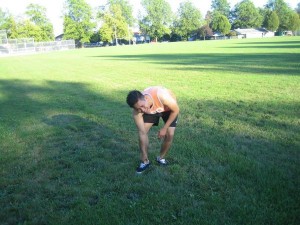Mallet toe refers to a toe
deformity wherein the toe is bent cannot be straightened at the end joint, resembling a mallet. A mallet toe can wither be flexible or rigid. Flexible mallet toes pertain to toes that are in its developmental stages and can still be moved at the joint. This can still be amended with corrective measures. On the other hand, rigid mallet toes occur when tendons tighten causing misalignment of the joints and become stuck in mallet-like position. Surgery is usually required in rigid mallet toes.
The second, third and fourth toes have two joints each. As previously mentioned, mallet toe affects the last joint. It should not be confused with hammer toe, another toe deformity that affects the middle joint. When a mallet toe develops, it becomes more prone to corns that can progress into an ulcer if left untreated.
Causes of Mallet Toe
The causes of mallet toe and hammer toe are similar. Both toe deformities are presumed to be associated with:
- Wearing poorly fitted shoes that are too narrow and tight to the toes
- Wearing high heels
- Toe injury
- Arthritis
- Tightened ligaments
- Nerve disorders and injuries (may likely cause multiple mallet toes)
- Family history of having flat foots and/ or high-arched feet
Signs and Symptoms of Mallet Toe
- Pain in the affected toes, especially when rubbing against the top of the shoe
- Bending in the last joint of the toe
- Corn from excessive rubbing, which may lead to ulcer if irritated
- Pressure and discomfort
- Difficulty moving the affected toes
- Finding difficulty in proper shoes to wear
Treatment for Mallet Toe
It will be necessary to seek medical advice in cases of hammer toe in order to give proper corrective measures. Doctors will usually prescribe appropriate treatment. However, if there is discomfort and pain from the mallet toe, first aid may be applied to help ease symptoms. These include:
- Wear shoes with sufficient space for the toes. For the meantime, avoid wearing heels or any shoe-type that may aggravate the condition of the toe/s.
- Wear a cushioned pad over the toe or beneath the toe tip.
- To avoid corns and calluses, rub with a pumice stone to keep them thin. Avoid using corn-removal products with uric acid as it may lead to skin infections.
- In cases of skin ulcers, treat appropriately.

Prevention of Mallet Toe
Mallet toes can be prevented with wearing appropriate and comfortable footwear. Wearing these kinds of footwear can also help prevent other ankle, heel and foot problems. The following tips are linked to reducing chances of developing a mallet toe:
- Avoid wearing pointed shoes with not enough toe room.
- Opt to wear low heeled shoes or flats.
- Always purchase shoes that are right in size, preferably at night when the feet are in their biggest at this particular time of the day.
Disclaimer: The article is for general information and should not be a substitute for medical diagnosis or advice. Enrol in First Aid Courses to learn more about hammer toes and application of first aid in other body deformities requiring emergency care.